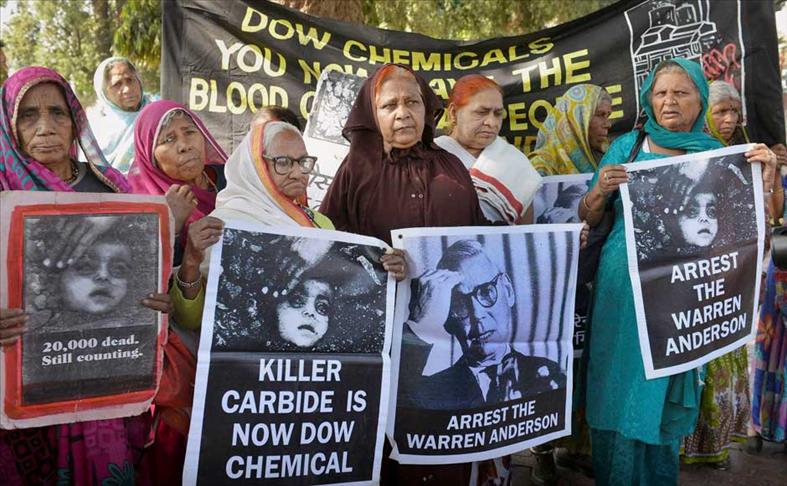Clearing away the aftermath of India's Bhopal disaster
Decades after the Bhopal disaster, India is still struggling to clear toxic waste left behind

by Shuriah Niazi
BHOPAL, India
It was almost 30 years ago that gas leaked from an American-owned chemical plant in central Indian city Bhopal. The leak on the night of Deember 2 1984 killed up to 8,000 people in the weeks afterwards and thousands more have died since, from the aftereffects of what is considered one of history's worst industrial disasters. The plant was shut down and Union Carbide -- the company that had run it -- faced a flurry of court cases for its alleged negligence. Thirty years later, 350 tons of solid toxic waste remain at the site, contaminating groundwater supplies.
Previous efforts to dispose of the waste have failed -- seperate plans to transport it and incinerate it elsewhere in the state, in western Indian state Gujarat and even in Germany failed after protests from local organizations. On April 17, India's Supreme Court ordered the Ministry for Environment and Forestry to conduct trials for the disposal of the toxic waste which has been lying in the plant since the 1984 disaster.
Drinking water supplies remain a serious health concern for the more than 40,000 people who live around the Union Carbide plant. A solar evaporation pond near the factory which the waste was pumped into while the plant was operational, has contaminated the ground water in the area.
“We have been living here since 1996. My daughter has been diagnosed with cancer in the year 2005,” said Razia of the Blue Moon colony near the plant. The Indian Institute of Toxic Research confirmed in 2012 that ground water in the colonies is contaminated and unfit for human consumption. The majority of the population depend on hand-pumped water for their daily needs, despite its effects on their health - many suffer from persistent abdominal pains, headaches, coughing and pain in their joints.
“We understand that water from these hand-pumps are hazardous and would affect our health but we have to use it for our own survival as the water supplied by the local water body does not fulfil our needs,” said Hamida, another resident of the colony.
Despite the government's lukewarm response to the Supreme Court demand for the Union Carbide site's clearance, non-governmental organizations have been working with the victims, with some success, to take their fight for justice to courts in both India and America.
A plant in the Pithampura area of Madhya Pradesh has been chosen for the disposal and trials have already been conducted there, despite objections. Local organizations working for the protection of those affected by the Bhopal disaster and its aftermath say that the work place in the chosen factory is not suitable for the disposal of toxic waste. Trial runs took five days for only 10 tons - the final plan proposed by the government suggests the remaining waste will be disposed of within just seven days.
Pithampura-based activists Lok Matri object to the results of the trial runs on two counts. “The first is the extremely slow rate of disposal. As against the usual rate of waste disposal of 2 tons per hour, the waste was disposed at 90 kgs an hour," said Lok Maitri member Gautam Kothari "Then, no study was conducted to assess the impact on the environment as well as on the nearby villages post trial runs.”
Thirty years after the Bhopal disaster, there seems to be progress towards finally disposing of the waste generated by the plant but whether that actually happens hangs in the balance; new proposals are facing old objections.
Anadolu Agency website contains only a portion of the news stories offered to subscribers in the AA News Broadcasting System (HAS), and in summarized form. Please contact us for subscription options.

